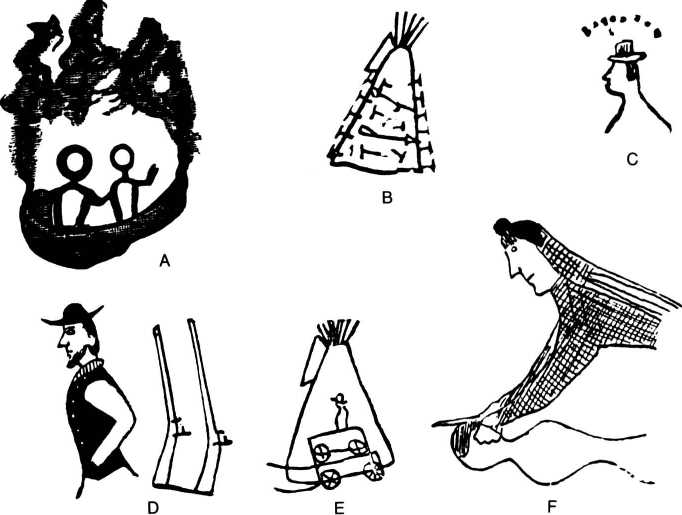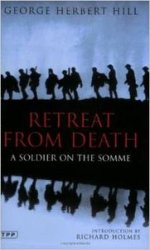The year is like a circle. Seasonal events and holidays succeed one another and become united in a complete cycle when they begin to repeat themselves in a recognizable pattern. For the Greeks, the deified symbol of this great circle was the most famous time god himself. According to the mythologist Jane Harrison: "Kronos is the Accomplisher of the full circle of the year. He is not the Sun or the Moon, but the circle of the Heavens, of Ouranos, husband of Ge [Gaia]; of Ouranos, in whose great dancing-place the planets move."' Although we tend to think of the year as purely a solar cycle, actually it is outlined and delineated by the movement of most celestial bodies. Kronos is not a sun god, or even the god of the heavens; he is the god of the circle of the year, the personified expression of the calendar of Hesiod's Works and Days in which the passage of time is marked by the celestial dance steps performed by sun, moon, and planets.
While the change of events during a year is obvious, not so is its beginning and its end—its duration. We humans generally reckon the years and our passage through them in reference to significant, landmark events. Every year has signal events one memorizes subconsciously and in sequence to order the happenings in everyday life. Though some people may recall "that was in '87" or "at the end of '85," most of us say, "It was the year we moved to the West Coast," or, "It happened during the holiday season." Sometimes we can pin down the event in question by locating it between definable temporal landmarks, with only the vaguest hint of seasonality: "I'm sure of it because it was shortly after you returned from school but before we bought the new car in the spring"—hardly a mode of time reckoning on which everyone can agree.
On the other hand, because in the West we equate time with money, in the business and professional world we are compelled to use precise, legally defined station points in the calendar: "Let's see, today is the 13th, so our bill of lading ought to be sent out to you by the 20th." But the time written in our record is not usually the one that gets impressed in our memory file. We know we need to be back home to receive the goods after a stop in Chicago but before we see a client in Pittsburgh. These key events, like marriage or the move to a new apartment, become the signposts on time's road in our and other cultures; to these signposts we attach peripheral happenings and form a chain of events to hang on to as we try to grope our way back into the labyrinth of memory or to link ourselves up with the uncertainties of the future.*
As I have said, we all sense time as an event sequence in our culture as well. If you were to write down in chronological order the ten most significant events, good or bad, that have influenced the course of your life, the odds are high that you would make little or no reference to a numerical-year calendar when you try to order them. A good part of your early chronology would undoubtedly be made up of the school years, which serve as the basic chronological landmarks. After high school and maybe college graduation, the events in job advancement would probably take over as your personal historical mileposts. The most obvious year references would be those that have been
•Native American tribes also developed abstract symbols to stand for the years. Perhaps the idea of equating years and circles is universal, for the Dakota Sioux used little round circles to denote them. Other tribes marked the years by notches on a stick. But these symbols were not counted; the Sioux and other tribes did not perform arithmetic with their years as we do: "The postwar period has lasted 44 years," or, "It has been 8 years since the start of the AIDS epidemic." Instead, each circle or notch stood for an event. The year-narrator used the stick as a mnemonic, not as an arithmetical device— less like a wall or desk calendar and more like the way one ties a string around a finger or memorizes a series of first letters of items to remember to purchase at the supermarket: "B means bread, O means orange juice, Y means yogurt." Sequential arrangement of these items into a list in that particular order makes the task even simpler for now one need remember only the single world BOY.

FIGURE 4.1 The years of the Dakota Sioux winter count. One can read the events off the calendar and count years at the same time: each year in a sequence is, instead of being numbered, identified by the principal tribal or intertribal event that took place in it. In the complete sequence {not shown}, the distance between any two pictures represents a time span; scanning the series of pictures, the mind moves from the event, sensed directly, to the duration between—a much more difficult entity to conceive, and that numbers help us keep track of. [A] The winter people were burned (their camp was destroyed by a prairie fire; 1762-63); (B) Oglalas engaged in a drunken brawl which resulted in a tribal division (1841-42); (C) Nine white men came to trade with the Dakotas (1800-1801); (D) A trader brought the first guns (1801-2); (?) Dakotas saw wagons for the first time (1830-31); (F) Crows came to the Dakota camp and scalped a boy (1862-63). Source: After G. Mallery, Picture Writing of the American Indians, 10th Annual Report, Bureau of American Ethnology, 1888-89 (Washington, D. C.: Government Printing Office, 1893).
Forced into your memory by convention—say, your class of 1968 high school graduation or the college class of 1972.*
If the duration of a year is felt as the churn of events that make it up, then the year is a whole, equal to the sum of its parts. It is not so
•In the Dakota Sioux year-count system, absolute time was marked not by the date or the number in a cycle, but rather by the most significant event occurring between consecutive winters (see figure 4.1). They painted each event in the form of a sequence of picture writings on buffalo hide: the inundation, the war, the great snowfall, the disastrous hunt, the constmction of a new town by the whites, and so on. These major events constituted the Sioux's winter count—a year calendar not unlike our month calendar. In the Dakota Sioux's calendar, time and history appear to be the same.
Much divided into months or seasons as comprised of all of the bits and pieces whose repetition makes their union recognizable. Life's social events are acted out against nature's seasonal background— agricultural operations, the coming and going of the birds, the rain, the leaves on and off the trees. We think of these events as taking place over twelve months or, more broadly, four seasons—though, in many areas of the southern United States and in most tropical regions of the world, it makes better sense to think of only two, the wet and the dry alternating endlessly.
Today's relatively useless notion of a four-season calendar probably began as a two - or a three-season sequence. At least we know that in ancient Greece fall went unrecognized. There was only winter, spring, and summer; and these were associated with the qualities of cold, wet, and dry, respectively. The fruit harvest time did not become regarded as a season in its own right until about the time of Homer. Then, like spring, it came to represent a transition period between the two other seasonal extremes of the year. It was only when the four seasons were rigidly affixed to the two equinoxes and two solstices on the sun's course that we developed the four periods of almost precisely equal length still used today—although they have little practical meaning. Does summer's heat really begin when the calendar implies, late in June? Not when most parts of our country suffer heat waves in April and May. At the other end of the real meteorological scale, there is the winter of November which occurs; according to the calendar, in most northern climes in the middle of autumn. In reality, there is an overlapping of the seasons—a sense of instability to the event sequences that make up the cycle of nature's behavior. Sometimes the drought is prolonged, winter comes early, spring rains and the rising of the river are devastating. Thus, allocating nature's behavior among the four seasons gives us only the illusion of control.
In actual practice, our seasonal calendar pays less attention to nature's sequential events and more to those of society. Of course, we still have a hunting season, and the harvest season is on when the vegetables in the supermarket are least expensive—if not the best tasting. But many seasons that we choose to recognize are only marginally connected to the four climatological ones. We celebrate the holiday season and shop during the fall fashion season. We usually try to suppress all thought of the income tax season, which arrives toward the end of the fiscal year. A host of other seasons, even more vaguely connected to the solar cycle, nevertheless still manage to occur annually: the flu season (obviously weather related); the back-to-school season, which once commenced after harvest time when children were needed at home on the farm; and, in some locations, the "oysters-R-in" season. Finally, there are seasons one would be hard pressed to connect causally to the cycles of nature, except to suggest, "That's when we always do it." I have in mind the bridal season, the concert theater and ballet season, and television's many "new seasons"; the new car season; the football, baseball, and other sports seasons (with the advent of indoor stadiums, the latter seem to merge into a single continuous yearlong season)—not to mention the January white-sale season and other after-the-holiday bargain seasons.
Where for centuries public festal days were tied in the Christian West to sacred days, when all commerce stopped, today few such days are observed, the exceptions being Christmas and, in some parts of the country, the Jewish high holy days. Today most stores remain open on holidays, and the holidays when some businesses and schools close are no longer sacred. In the United States, more civic than religious are the Fourth of July, Memorial Day, Veterans Day, Labor Day, giving Day, and all of the President's days, along with Martin Luther King Jr. Day. Likewise, the French have Bastille Day on 14 July; and the Mexicans, 20 November commemorating one of their great revolutions. It is ironic that while we want every year cycle to be precisely the same length, we are flexible on the observation of patriotic holidays within the round, many of which are now observed on the Monday nearest to their original date.




 World History
World History









